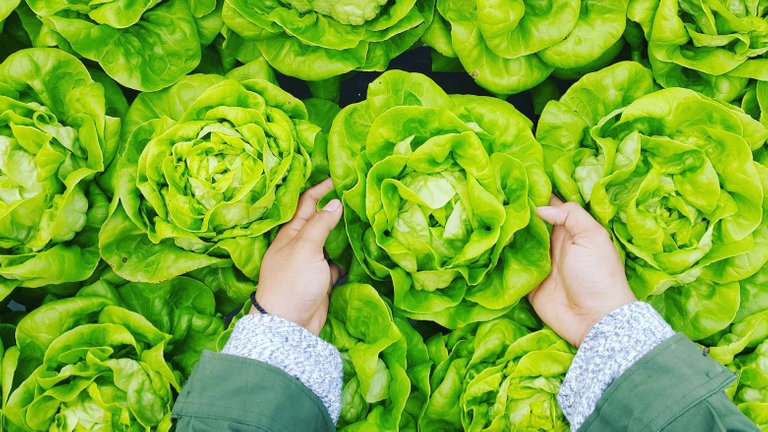How I became an Urban Farmer
A couple of years ago I was self sufficient on vegetables by experimenting with different growing techniques such as hydroponics, aeroponics and more traditional methods. My home step by step got transformed to some kind of farm and cultivation of plants became mindfulness for me.
Today I have studied Urban Farming related to environment and health at the University, I have participated in international conferences with leading entrepreneurs, politicans, chefs and researchers in this area and also worked with one of the first vertical farming projects with hydroponics that entered the market here. The startup is based in the old wine and liquor storage of Sweden, a 40 000 sqm underground facility down in the mountains of Stockholm.
I am really passionated about how to create a sustainable food system. But the more I learned the more clear it became that there is a lot of challenges and huge amount of factors to take into account.
Please share your input, ideas and thoughts!
Is Urban Farming sustainable?
I would love to discuss this topic with you! In this post I will touch a few aspects based on research and my own experience. I am a strong believer that we need to grow in our cities, but there's a lot to be done to get it sustainable all the way. What at a first glance seems to be good for the environment isn't always. Like a heated greenhouse during dark cold winter times, even if it's local.
Challenges of a broken food system
The world's food production accounts for about one third of the emissions of climate gases and is unsustainable in many ways. It causes everything from reduced biodiversity, eutrophication, depletion of cultivable soil, poor food quality in terms of nutrition as well as taste, and a production dependent on finite resources like phosphorus and oil.

At the same time the world population increase and there is huge urbanization. 60 percent of the urbanized area by 2030 is not yet built. All of this basically affects our survival abilities on the planet and several planetary limit values have already been exceeded.
We need new ways to grow
Just looking at Sweden we are very dependent on imported food which, except the climate impact, also is a vulnerability in crises such as climate changes. We import more than 70 percent of our fresh food. This is something urban farming can help to solve. Also we need to return the cities to the biosphere. When people get urban, research shows there is a tendency to lose the connection to the ecology which make us do less sustainable choices.
Climate impact
Food production's major climate impact is mainly taking place during the production of the food. Transport plays a role but is not decisive. Foods produced and consumed in the same region have sailed as an easy answer to these future challenges, but how environmentally friendly it is depends on how it is produced.
Urban food security is due to several factors such as accessibility and quality of food. Both urban farming and agriculture are needed. In low-income countries, sustainable urban farming systems such as agroforestry are important for food safety by reducing starvation and malnutrition. In Europe, they have filled an important role in natural disasters such as flooding and erosion. In Sweden and the Nordic region, local food production fills an important social function and contributes to some ecosystem services. Moving food production to places with high demand reduces emissions and mitigates climate change from transportation. Urban cultivation also increases food production by utilizing new cultivation sites.
There are several urban cultivation systems from edible landscapes and beekeeping to rooftop- and vertical farms.
Future sustainable farming systems need to be productive, based on renewable resources, recycle nutrients and use less water.
So, what about hydroponics?
The trendy hydroponics meets many of these criteria. Hydropony is a cultivation system where plants grow without soil. Instead, water is used with nutritional solutions in a closed system. It makes it possible to dosage the nutrition exactly. Nutrition may come from one or different sources such as waste or manure. The roots can grow directly in the water or be supported by any medium such as perlite, leak balls or gravel. It's a method NASA use to grow in space but it has been used for a long time, already in the hanging gardens of Babylon.
Both hydropony and other urban agriculture have been important during crises. At the 1st and 2nd World War, the US Army used hydroponic systems to produce vegetables for soldiers and civilians on polluted islands in the Pacific. With indoor cultivation a protected environment is created which has many advantages.
Some pros:
- Hydropony uses 90 percent less water than in traditional farming in soil and help save on fresh water.
- Does not risk getting pests in the same way and dont need pestisides.
- The crops are able to grow up to five times faster.
- You can grow for nutrition and taste and do not need to take into account that the crop will handle long journeys.
- Because hydroponics are not directly dependent on soil and climate factors, cultivation can take place all year round regardless of the weather. Even cities or places with polluted soil or extreme climate can grow healthy food.
- Urban environments are often polluted by industry, household and transport. At the same time, agriculture often pollutes the environment through pesticides, chemical and organic fertilizers. Growing vegetables and vegetables in containers, such as hydroponic and aquapotonic systems, is therefore not only positive in terms of pollutants in crops. It also prevents fertilizers and pesticides from leaking in nature.
- It can also be a great way to simulate future climates.
- Hydropony can help regulate the local air quality by absorbing carbon dioxide and producing oxygen.
- It can also contribute to the cultivated diversity.

But hydroponics has it's disadvantages. It can be hard to get profitable and there's a lot to be done in terms of full lifecycle analysis. For example how the LED lights, culture vessels and nutrients are produced. Today, most hydroponic cultivation vessels consist of plastic, even if materials such as concrete, glass, metal, vegetable materials or wood could also be used. It is important that the vessel does not pass through light as it may begin to grow algae in the nutritional solution.
With the steady rise in soil erosion and the loss of arable land, I think the importance of cultivation without soil is likely to increase in the near future. Due to its light weight and resource efficiency, soil-free cultivation systems are particularly suitable for urban areas. A critical problem with locally produced food in general is the high workload, but hydroponics can be automated.
To make the industry more sustainable it could be a good idea to create a circuit solution with cities could be a solution but it is difficult as it appears today, since the waste is often contaminated with, for example, drug residues. More life cycle assessments also need to be made to see the overall environmental impact of hydroponic cultivation systems - ranging from water use in the concrete used for buildings to the energy costs for lighting. There are many different ways to integrate indoors in urban areas. However, there is not much research that provides sufficient information on profitability yet. There is a couple of thousands of these farms in the world, and only a handful of them seems to make it successfully.
Hydroponic urban cultivation contribute to several ecosystem services, but far from everyone. Depending on the design and planning of hydroponic crops, they can also contribute to recreation, experiences and inspiration. But because it's closed systems, often indoors, does not cultivate the habitat for insects, animals and pollinators. It also does not regulate the local outdoor climate, protects against natural disasters such as flooding and erosion or biological control in the same way as forestry cultivation.

I could write about this forever so let's stop here for today. If you think it's interesting I would love to write more about Urban Farming, sustainability and the challenges of our broken food system.
<3 Moa
My goal is to create an oasis of wellbeing here on Steemit. If you like the post - please upvote, comment, resteem and/or follow!
Read more:
Amazing benefits of broccoli sprouts (+ growing guide!)
How to make your own RAISINS - recipe!
Hi Steemians! I'm Moa and I fled the rat race to live on an island


She's Back!
And what could be better than to get a comment from Papa Pepper! Thank you, happy to be back :D
(This time just a couple of months later, instead of year... ;P)
Welcome back to the
forkfort?Thank you ;)
you're welcome
Hi nice post dear . i also love farming.
Thanks!! Yes it's so wonderful! :)
You got a 5.78% upvote from @postpromoter courtesy of @givemeyoursteem!
Want to promote your posts too? Check out the Steem Bot Tracker website for more info. If you would like to support the development of @postpromoter and the bot tracker please vote for @yabapmatt for witness!
Thank you! :)